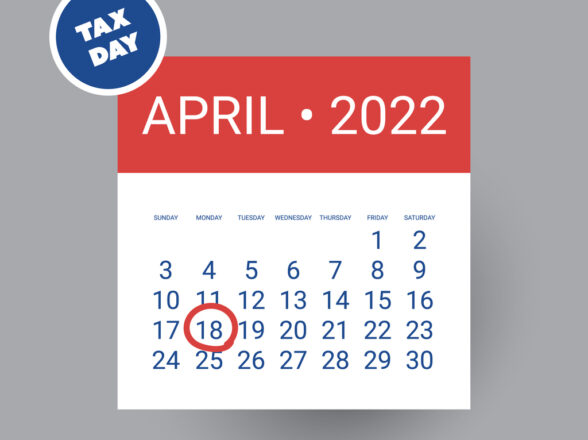Blog
Is Social Security Solvent?

Social Security solvency refers to the ability of the Social Security program, specifically the Old-Age, Survivors, and Disability Insurance (OASDI) trust funds, to pay full benefits as scheduled over the long term. The program faces a looming financial shortfall due to demographic shifts, economic factors, and policy decisions. We discuss Social Security’s solvency status, challenges, and potential solutions.
Current Solvency Status
- Trust Fund Projections:
- The 2024 Social Security Administration (SSA) Trustees Report projects the OASDI trust fund will be depleted by 2034 (combined Old-Age and Survivors Insurance (OASI) and Disability Insurance (DI) funds).
- Upon depletion, without Congressional action, benefits would face an automatic ~23% cut across the board to match incoming revenue, affecting ~70 million beneficiaries.
- Some analyses, like the Penn Wharton Budget Model, suggest depletion could occur earlier (e.g., 2032–2033) if policies like eliminating taxes on Social Security benefits are enacted.
- Revenue and Costs:
- Revenue: Social Security is primarily funded by payroll taxes (12.4% total: 6.2% from employees, 6.2% from employers, up to a 2025 wage cap of $176,100), plus income taxes on benefits (~$60.8 billion in 2025) and interest on trust fund reserves.
- Costs: Annual benefit payments exceed $1.4 trillion (2025), driven by an aging population and inflation-adjusted benefits. Costs are projected to outpace revenue by $83 billion in 2025, growing to $360 billion by 2034.
- The trust fund’s cash deficit (non-interest income minus costs) was 1.7% of taxable payroll in 2024, projected to rise to 4.2% by 2034.
- Key Metrics:
- Actuarial Deficit: The program’s 75-year shortfall is 3.50% of taxable payroll (2024–2098). Closing this requires revenue increases or benefit cuts equivalent to ~25% of current benefits.
- Cost-to-GDP Ratio: Social Security spending is ~5% of GDP (2025), projected to peak at 6.2% by 2035, then stabilize.
Factors Driving Insolvency
- Demographics:
- Aging Population: Baby boomers retiring increase the beneficiary-to-worker ratio (2.8 workers per retiree in 2025 vs. 3.3 in 2000; projected 2.3 by 2035).
- Longer Life Expectancy: Retirees collect benefits longer (e.g., life expectancy at 65 is ~20 years in 2025).
- Lower Birth Rates: Fewer workers contribute payroll taxes (U.S. fertility rate ~1.6, below replacement level).
- Policy Impacts:
- Taxation of Benefits: Revenue from taxing benefits ($60.8 billion in 2025) supports the trust fund. Eliminating this, as Trump proposed, could accelerate depletion to 2032, increasing the 75-year shortfall by ~0.45% of taxable payroll.
- No Recent Reforms: Congress has not addressed solvency since 1983, when payroll taxes were raised and benefits adjusted.
Potential Solutions to Restore Solvency
Congress must act to prevent insolvency, likely combining revenue increases and benefit adjustments. Options include:
- Revenue Increases:
- Raise Payroll Tax Rate: Increase the 12.4% rate (e.g., to 15.4% by 2034) or create a graduated rate for high earners.
- Lift Wage Cap: Tax earnings above $176,100 (2025 cap). Eliminating the cap entirely could close ~70% of the shortfall but faces political resistance.
- New Taxes: Apply payroll taxes to investment income or introduce a wealth tax, as proposed in some progressive plans (e.g., Social Security 2100 Act).
- General Revenue: Divert income tax revenue to Social Security, though this breaks the program’s self-funded tradition.
- Benefit Adjustments:
- Reduce Benefits for High Earners: Means-test benefits or cap growth for wealthier retirees (e.g., those with incomes >$100,000).
- Adjust COLAs: Use a chained CPI (lower inflation measure) to slow benefit growth, saving ~0.3% of taxable payroll but reducing real benefits over time.
- Raise Retirement Age: Increase the full retirement age (67 for those born after 1960) to 68 or 70, reflecting longer lifespans, though this impacts lower earners disproportionately.
- Revise Benefit Formula: Reduce the replacement rate for higher earners (e.g., lower Primary Insurance Amount factors).
Political and Economic Considerations
- Bipartisan Challenges: Republicans favor benefit cuts or privatization (e.g., personal accounts), while Democrats push revenue increases and benefit expansions (e.g., Social Security 2100 Act raises benefits and taxes high earners). Compromise is elusive.
- Public Opinion: Polls (e.g., Pew Research, 2024) show ~80% of Americans oppose benefit cuts, but many resist tax hikes, complicating reforms.
- Economic Trade-offs: Closing the shortfall via taxes could slow GDP growth (e.g., ~0.2% by 2040 per CBO), while benefit cuts reduce retiree income, impacting consumption.
Timeline and Outlook
- 2034 Deadline: Insolvency looms in ~9 years, but political inaction persists due to polarized proposals. Congress typically acts only under crisis pressure (e.g., 1983 reforms).
- 2025 Context: Trump’s tax proposal, if passed, could force earlier action (e.g., by 2032). Republican control of Congress may prioritize tax cuts, delaying comprehensive reform unless paired with deficit reduction (e.g., via DOGE initiatives).
- Interim Measures: Congress could use general revenue transfers to delay cuts, but this isn’t a long-term fix and risks deficit growth.
Implications for Individuals
- Planning: Assume a ~23% benefit cut post-2034 unless reforms occur. Diversify retirement savings (e.g., 401(k), IRAs) to reduce reliance on Social Security.
- Tax Changes: If taxes on benefits are eliminated, retirees keep more income, but solvency risks grow. Monitor 2025 tax legislation for planning adjustments.
Social Security faces insolvency by 2034, with a ~23% benefit cut looming unless Congress acts. Demographic shifts, rising costs, and policies like eliminating benefit taxes (e.g., Trump’s proposal) exacerbate the shortfall. Solutions require politically contentious trade-offs between tax hikes and benefit cuts, with no consensus yet. For your context, spousal Social Security’s solvency impacts strategies like hiring a spouse, as future benefits may be less reliable, and tax changes could alter income planning. Stay informed on 2025 legislative developments, diversify savings, and consult a financial advisor for tailored strategies.

















































































































